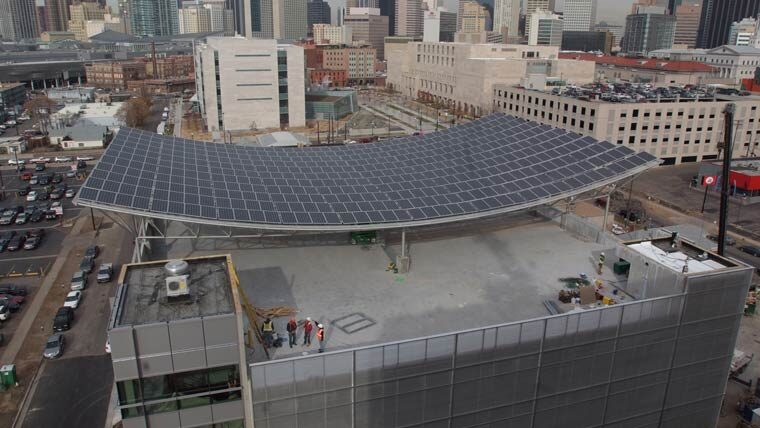Back in early December, the Biden-Harris Administration announced the first-ever Federal Building Performance Standard. The standard sets goals to cut energy use and electrify equipment and appliances in 30% of the building space owned by the federal government by 2030. The new Federal Building Performance Standard plays a role in this administration’s broader goal of achieving net-zero Scope 1 greenhouse gas (GHG) emissions in 30% of federal buildings by 2030 and all federal buildings by 2045. This would be achieved through electrification of building systems and cessation of the use of fossil fuels.
This is an ambitious goal and will require investments in deep energy retrofits, electrification, heat pumps, refrigerants, electric water heaters, and other building system technologies with an emphasis on American-made products.
So, what’s to like about the new standard? A lot.
This is no unfunded mandate. The President’s Inflation Reduction Act (IRA) provides substantial tax incentives for energy efficiency and clean energy investments for the next 10 years, covering 30 to 50% of costs. Under the revised Energy-Efficient Commercial Buildings Deduction, 179D, the total available deduction for developers and contractors completing these projects will nearly triple, increasing from $1.80 per square foot to potentially $5 per square foot, depending on the project’s demonstrated increase in energy efficiency. Property owners installing rooftop solar, energy storage systems, or EV charging can get 30% or more of their investment back in the form of a tax credit.

Does the Federal Building Performance Standard go far enough?
After all, it does apply to only federal buildings, and there are, of course, some mission critical exclusions. And even though the General Services Administration (GSA) is the largest property owner in the U.S. with over 371 million square feet in 8,600 buildings and 2,300 communities, it is still less than 0.5% of the total real estate property market – 97 billion square feet and rising – of the nation. Some will argue that is nowhere near large enough to have a significant impact. However, government has often needed to lead the way – clearing the path of obstacles so that wide-spread adoption across private capital markets might occur. I appreciate the leadership this administration is providing and the recognition that climate change is an existential threat to our security, health, and economy. The IRA tax incentives available to commercial projects certainly provide a significant carrot to the larger market.
The hope is that more state and local governments will follow suit, spurring continuous improvements in energy codes and pushing insurance companies and lending institutions to enact requirements forcing change at the broader real estate and building industry level. To that end, more than 30 state and local governments have already joined the National Building Performance Standard Coalition with the aim of reducing overall emissions of existing buildings.
Infrastructure-related projects (bridges roadways, aviation, mass transit) as well as local governments, metropolitan planning organizations, tribes, and other public authorities have access to $550 billion of potential funding between 2022 and 2026 through the Bipartisan Infrastructure Law (BIL) signed into effect in November of 2021. One of the requirements of the funding application request is to demonstrate a “reduction in air pollution and greenhouse gas emissions from a reduction in energy consumption through energy efficient design. This includes reliance on alternative energy, water use reduction, sustainable site selection and development, responsible materials selection, and waste management, incorporating lower-carbon pavement and construction materials, enhanced indoor environmental quality, use of renewable energy production, or other sustainability efforts (e.g., vehicle charging stations) that further reduce long-term impact on climate.”
The Federal Building Performance standard, partnered with the IRA and BIL, leverages incentives to affect change. In most cases, the incentives can be bundled together to include multiple green building improvements on a single project. In many cases, local governments, school systems, nonprofits and other organizations without tax liability can use them through newly created options for transferring the incentives or receiving them as direct payments. In addition, the law makes available tens of billions of dollars in grants, rebates, low-cost loans, and other financing available to the U.S. Department of Housing and Urban Development (HUD) for improvements to affordable housing, the EPA’s national green bank program, and of course federal building upgrades.
Still, only so much reduction can come from efficient building and systems design and operations alone. We must also dramatically decrease the amount of fossil fuels used to power our buildings and utility grid. We must make stronger use of wide range of clean and renewable energy – solar PV, hydropower, geothermal – and very likely nuclear power in some way. It is both interesting and laudable that the GSA Administrator Robin Carnahan has pledged that none of the federal building money would go to fossil fuel projects.



